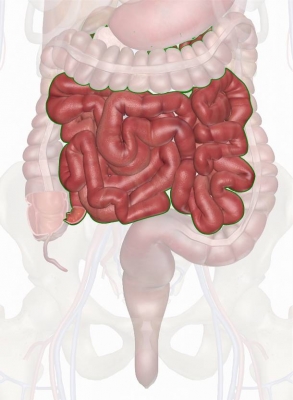
The small intestine is the longest part of the digestive system. It’s where most of the digestive process takes place, releasing the nutrients in food so that they can be used to fuel the body’s cells.
By the time food reaches the small intestine, the stomach has turned it into a liquid called chyme. This chyme is squirted into the duodenum, the first part of the small intestine, along with bile from the gallbladder and enzymes from the pancreas, which break the chyme down even more. Finally, when most of the food has been broken down into simple nutrients, these pass through the walls of the small intestine and into the bloodstream. The remaining food progresses to the next stage – the large intestine.
As a person grows the small intestine increases 20 times in length from about 200 cm in a newborn to almost 6 m in an adult. The length of the small intestine is approximated by three times the length of the infant, or height of the child or adult.
The duodenum is about 25 cm (10 inches) long; the jejunum is about 2.5 m (8 feet) long and the ileum is about 3.6 m (12 feet) long.
Picture Credit : Google

